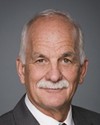All right, that is a good question, because it was the same question that the media asked after the announcement. What is the news here today?
Well, the announcement that we made was in response to the Auditor General's concern last November, when she indicated that in fact there was no clear document that brought together all of the federal agencies and departments to work in a coordinated fashion when we are confronted with an emergency. They not only have to coordinate with each other, but of course in many cases--for example, flooding along the Red River in Manitoba or the ice storm here in Ontario and Quebec, or forest fires in British Columbia and Alberta--the provinces are the key and primary jurisdiction. So not only do you have to coordinate the federal agencies with each other, but also you have to interface, then, with the provincial authorities.
So we thought the criticism or the concern of the Auditor General was well placed and we moved very quickly to put that plan together. In fact, we adopted this as a government, the federal emergency response plan, in December 2009, and that was announced yesterday.
I had the privilege to speak to a number of instructors at the emergency college who told me about how they coordinated activities. For example, if there was a hazardous waste spill in one part of Canada, you could essentially bring together responders from Montreal, Ottawa, Regina, Calgary, all working together not just as a team but indeed on the same body, in terms of cleaning up individuals who have been contaminated with hazardous waste and then bringing them right to hospital to make sure those individuals are properly cared for.
So the coordination and the work that has been done is an excellent example of the type of work that public servants are doing in the federal government by working together with provincial and municipal officials.





